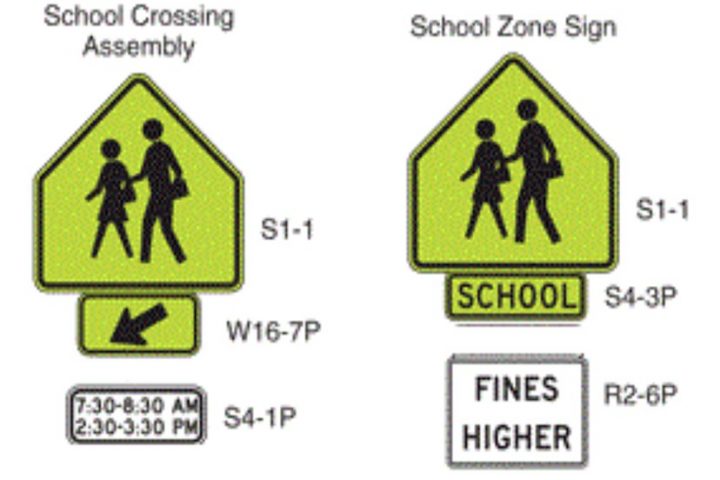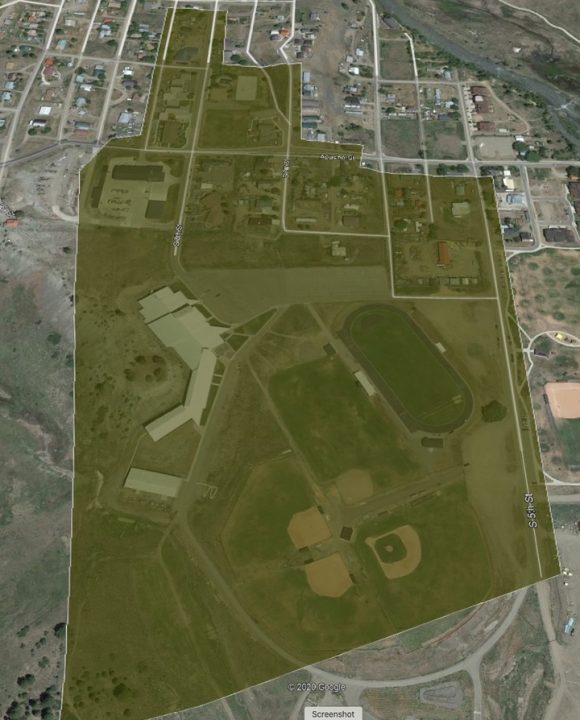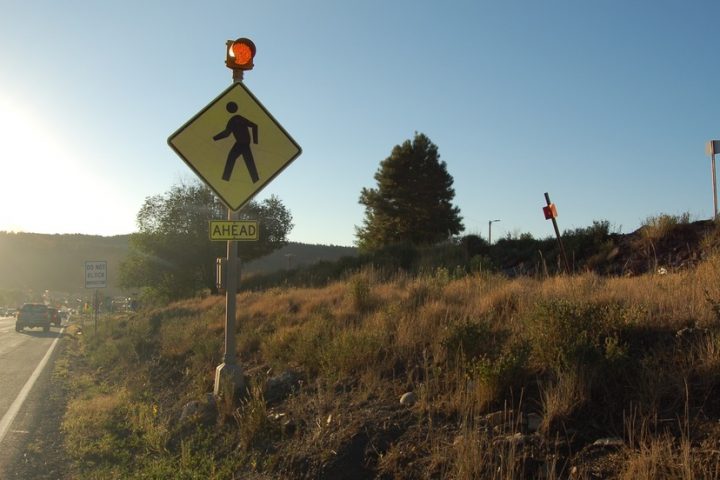The percentage of students who regularly walked and bicycled to school increased from 35% in 2008 to 50% in 2010. The school also reported a 36% reduction in car traffic and an increase from 25% to 70% of students who walk and bicycle to school daily. The program also supported an ongoing partnership by the school with Utah’s Gold Medal Schools program to reduce overweight and obesity rates in elementary schools…
— from a story about Alpine Elementary School in Utah, on the US Department of Transportation website.
On Tuesday evening, the Pagosa Springs Town Council met via a Zoom webinar, from the safety of their own homes. One of the items on the agenda concerned “School Zones”. Public Works Director Martin Schmidt and his Streets Department have plans to post new signage near some of our local schools to try and slow vehicle traffic — in part, by threatening motorists with “Fines Double” if they are caught speeding in those school zones.
One of the problems facing the Town staff, however, was a lack of officially established “School Zones” within the municipality. Without official designations, the “Fines Double” signs would not be “legally defensible”, the Council was told. The ordinance before the Council on Tuesday was to authorize the Town staff to designate such zones.
From the Council packet:
Whiles signage is critical, signs should be used judiciously, as overuse may breed driver noncompliance and excessive signs may create visual clutter. Both reduced speed and double fines must be backed up with local ordinance passed by the local government. Setting school zones can help with school traffic planning by coordinating with Safe Routes to School for pedestrians.
Here, for example, is a map of the “School Zone” that might be established for Pagosa Springs High School:
The Council discussion got me thinking about safety, and health, in Pagosa Springs.
Four years ago, after I moved back into our established family home in downtown Pagosa, to live with my daughter and son-in-law and their two young daughters, one of my occasional duties involved a trip to Pagosa Springs Elementary School to pick up Amelie from first grade, at the end of the school day. I often walked the eight blocks to the school — instead of driving, as so many parents and grandparents were doing — and usually, on those pedestrian occasions, I brought two-year-old Simone along, riding in a stroller. A bit of sunshine, and fresh air… and exercise, for Grampa and the girls.
The most dangerous part of the trip was crossing Highway 160, especially if we decided to cross at the non-signalized intersection at 7th Street. Even though the speed limit is 25 through Pagosa’s downtown core, vehicle operators are not always on the lookout for pedestrians. I understand this lack of familiarity; walking has nearly become a lost art here in Archuleta County — except among the community’s dog owners, who typically ply designated pedestrian trails along the River Walk, or on Reservoir Hill, or on the paved trails in the PLPOA subdivision. The shortage of 21st century pedestrians springs from a number of root causes, not least of which is vehicle operators who are ‘not always on the lookout for pedestrians’.
The absence of sidewalks along many downtown streets along contributes to pedestrian insecurity.
At any rate, I logged a few dozen walking trips to the elementary school that year, and, incidentally, I paid attention to the number of parents and grandparents who also walked to the school to pick up children, and the number of elementary school children who walked home on their own.
I recall only two instances where an adult — other than myself — had walked to the school to pick up a child. I do not recall seeing any child walking home alone. All the children, it seemed, either rode a school bus or were picked up by an adult in a vehicle.
A fair number of homes are located on the south side of downtown Pagosa, and to which an elementary school student could possibly walk without crossing Highway 160. Apparently, parents no longer feel safe allowing younger children to walk home from school. Even grandparents feel insecure making the trip on foot, it would seem. (The situation is different among the children who attend Pagosa Springs Middle School. Many of them can be seen walking home at the end of the school day.)
I mention these observations because the Town of Pagosa Springs has, for many years now, expressed the goal of encouraging a “pedestrian friendly” downtown, and steps have been taken in that direction (if you will excuse the pun.) The development of the River Walk trail, with its three pedestrian bridges crossing the San Juan River, have made life more pleasant for walkers in general, and for dog owners in particular. The construction of new sidewalks along key streets has taken place, including, most recently, two blocks of new sidewalks along Florida Street and one block on North 8th Street. That particular sidewalk installation was funded in part by a federal program called “Safe Routes to School”, because… well, in theory, someone might actually use that sidewalk to walk to the elementary school.
Except that, as far as I can tell, no one actually walks to the elementary school.
Maybe that will change, as a result of COVID? Who knows.
From the US Department of Transportation website:
Safe Routes to School (SRTS) is an approach that promotes walking and bicycling to school through infrastructure improvements, enforcement, tools, safety education, and incentives to encourage walking and bicycling to school. Nationally, 10%–14% of car trips during morning rush hour are for school travel. SRTS initiatives improve safety and levels of physical activity for students.
How can this strategy result in health benefits?
- Address chronic disease
- Increase physical activity
- Improve safety
- Reduce motor vehicle-related injuries and fatalities
- Reduce transportation’s contribution to air pollution
So we’re looking at health, and safety.
And visual clutter?




